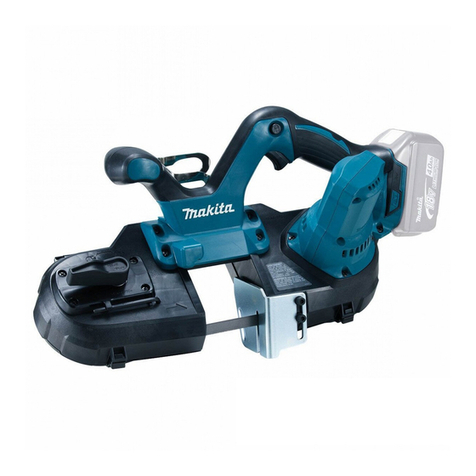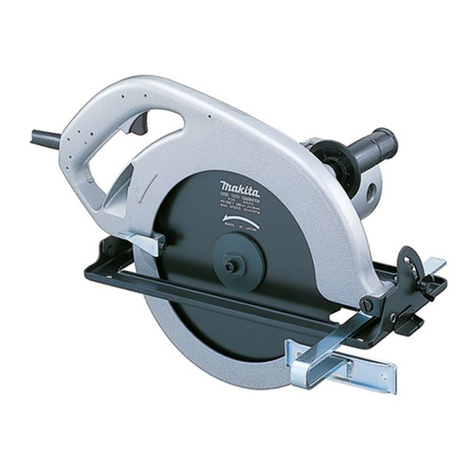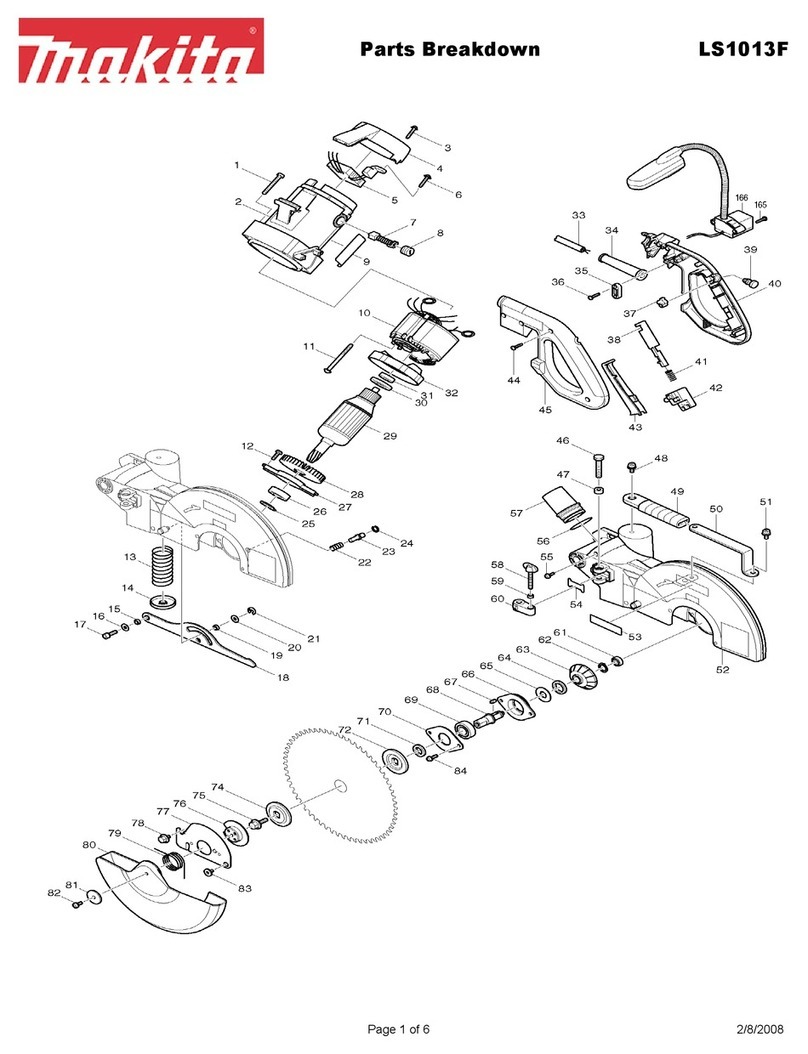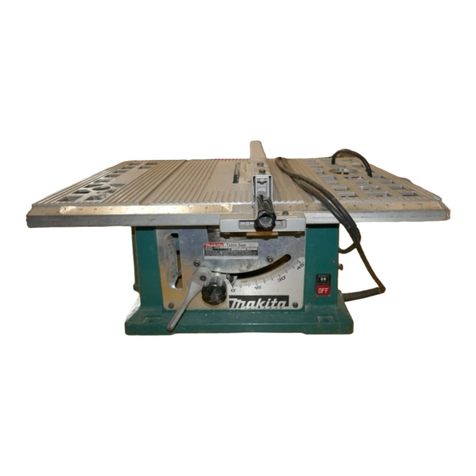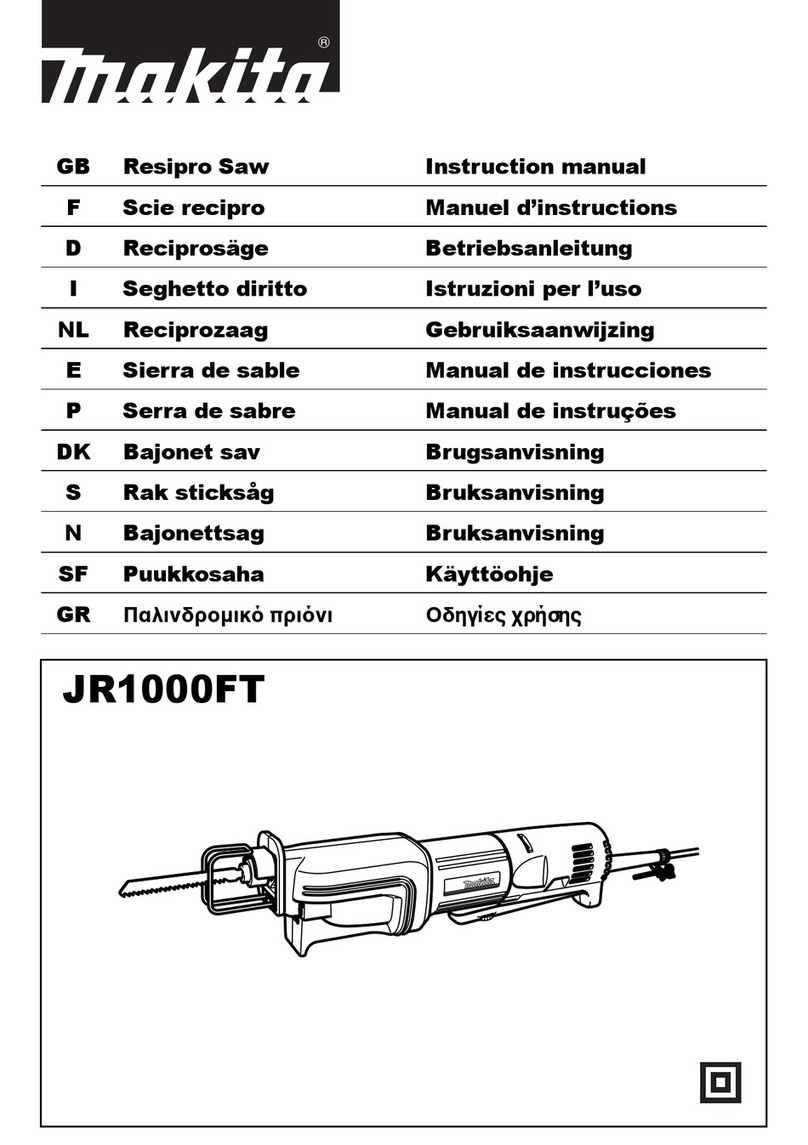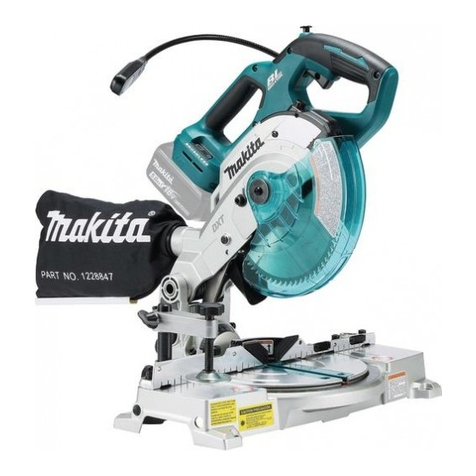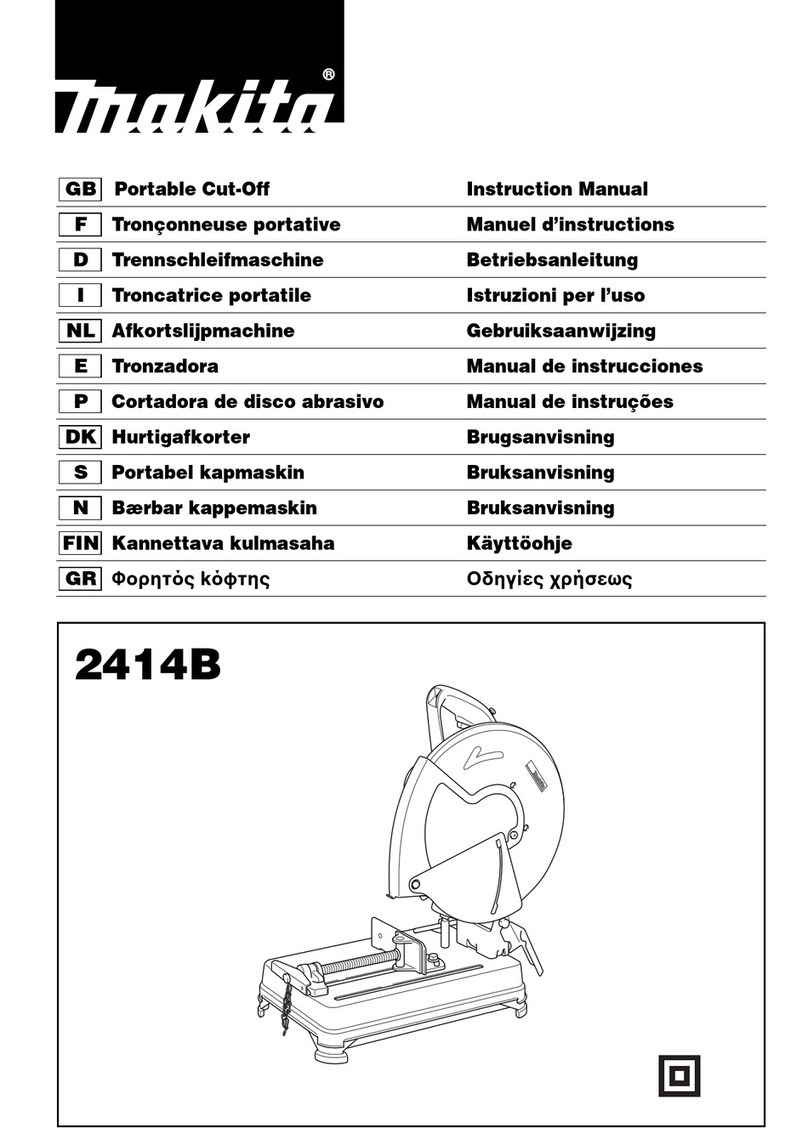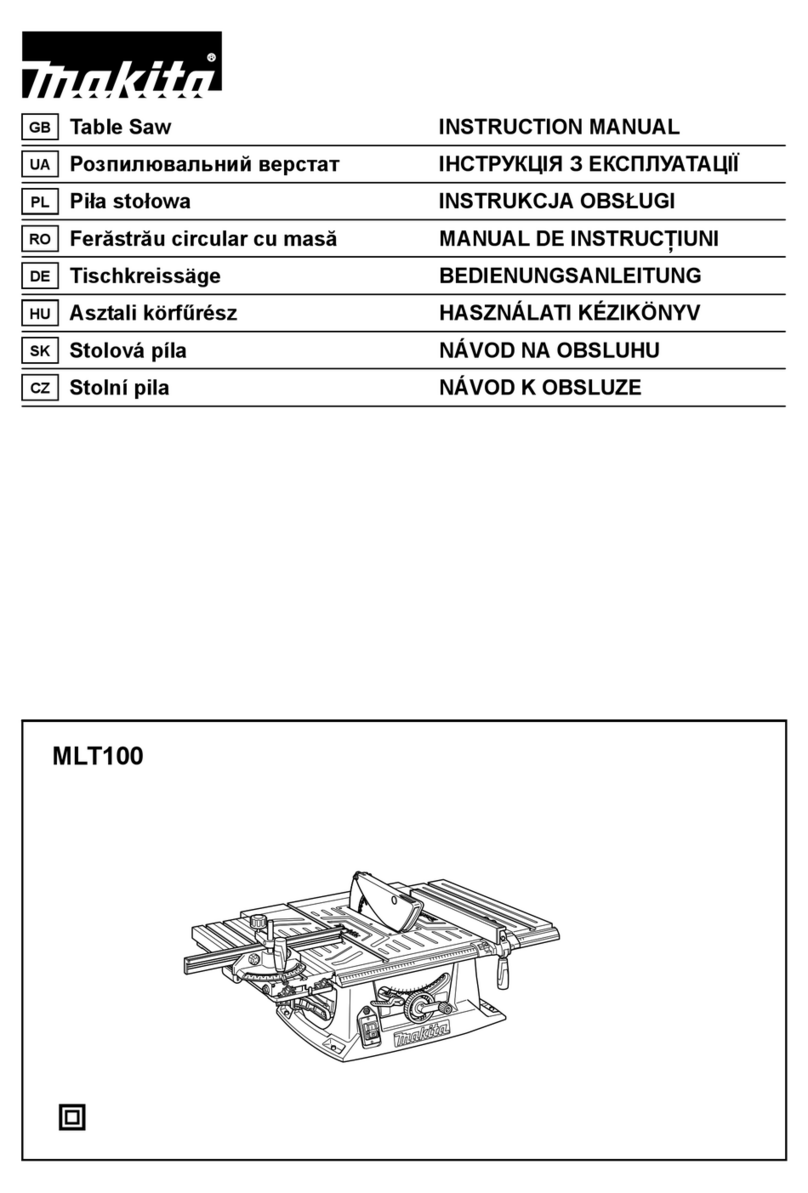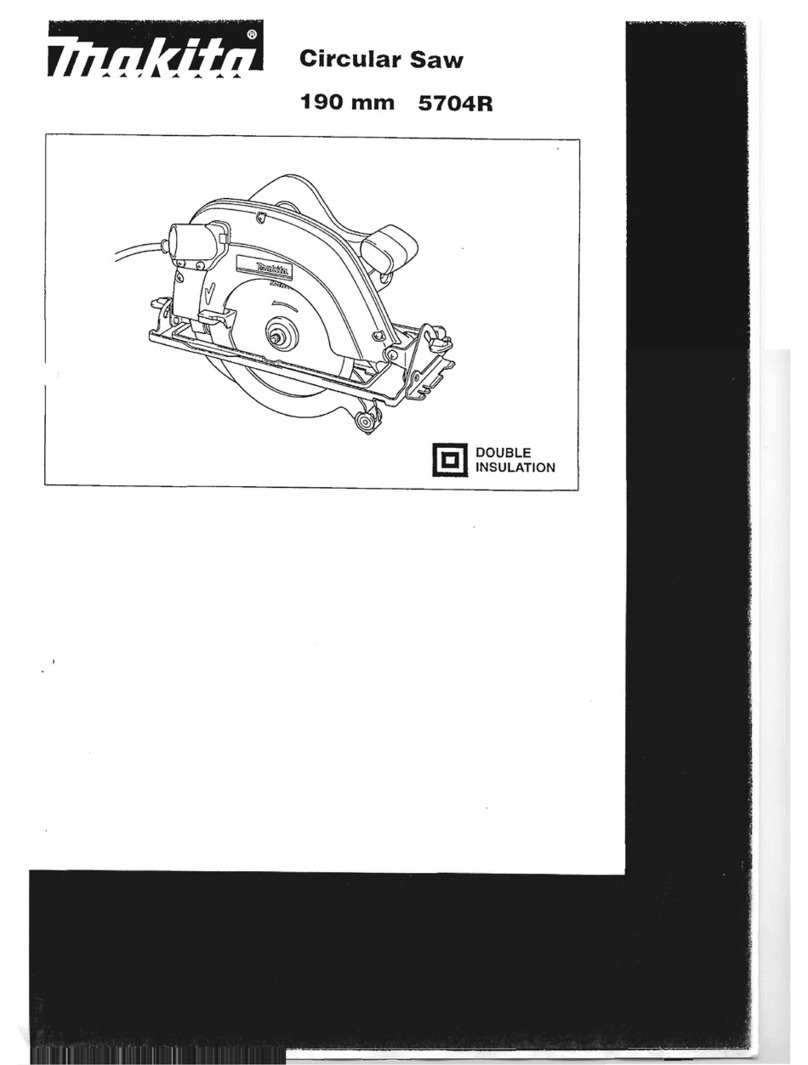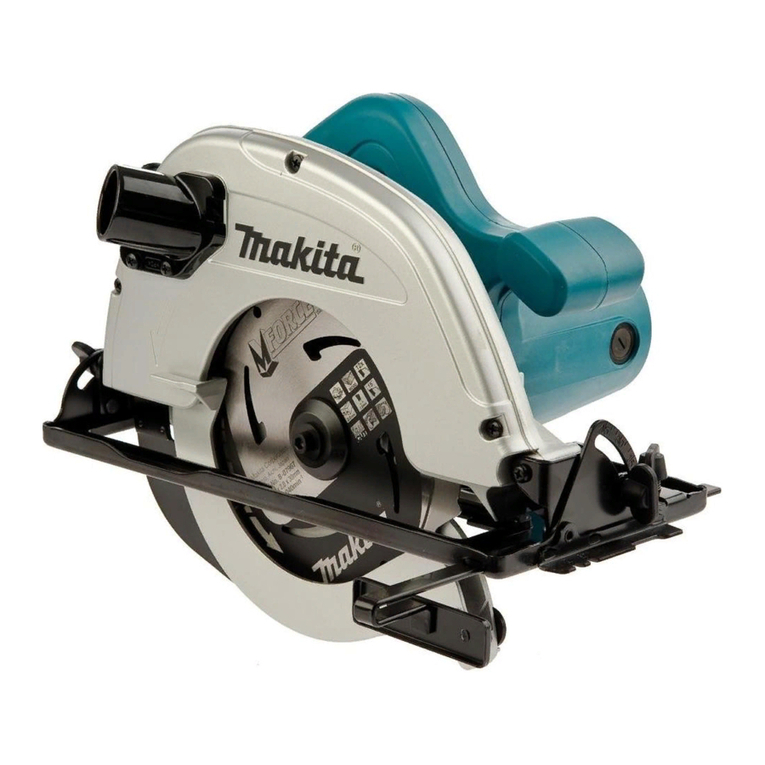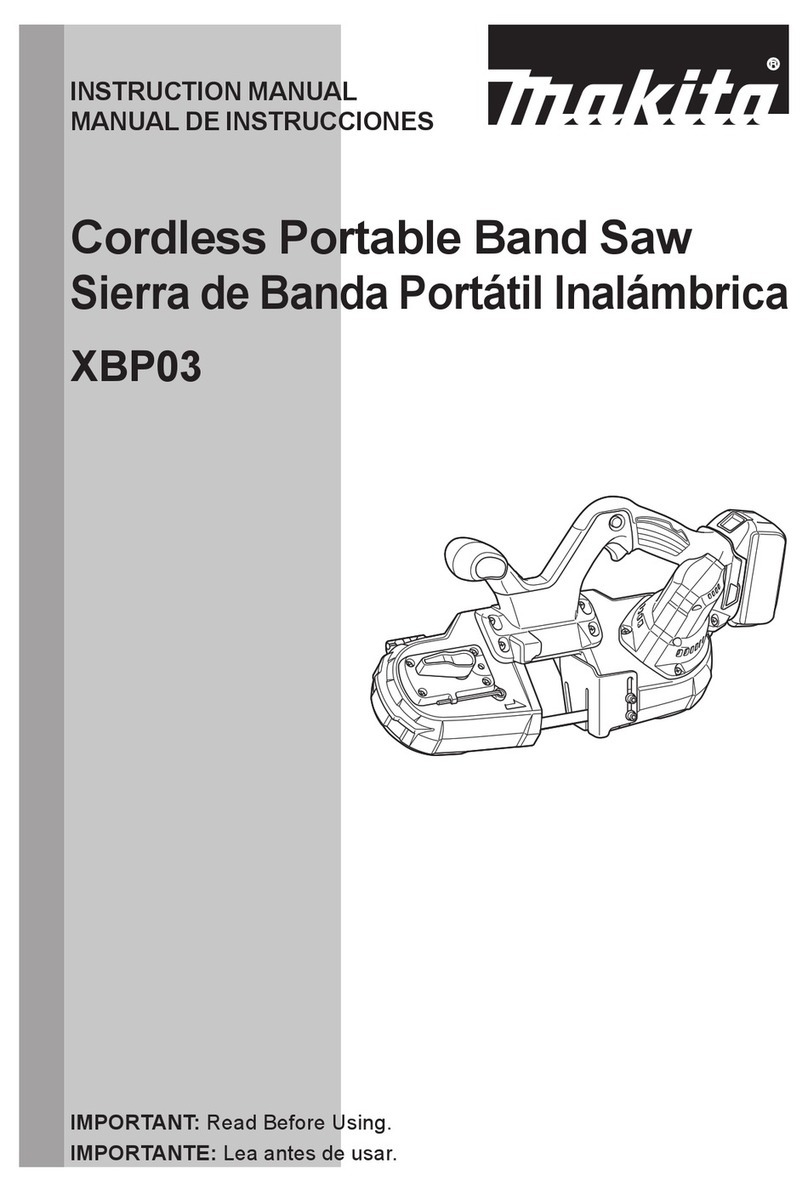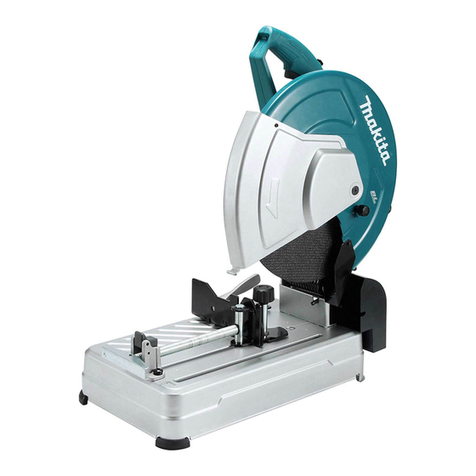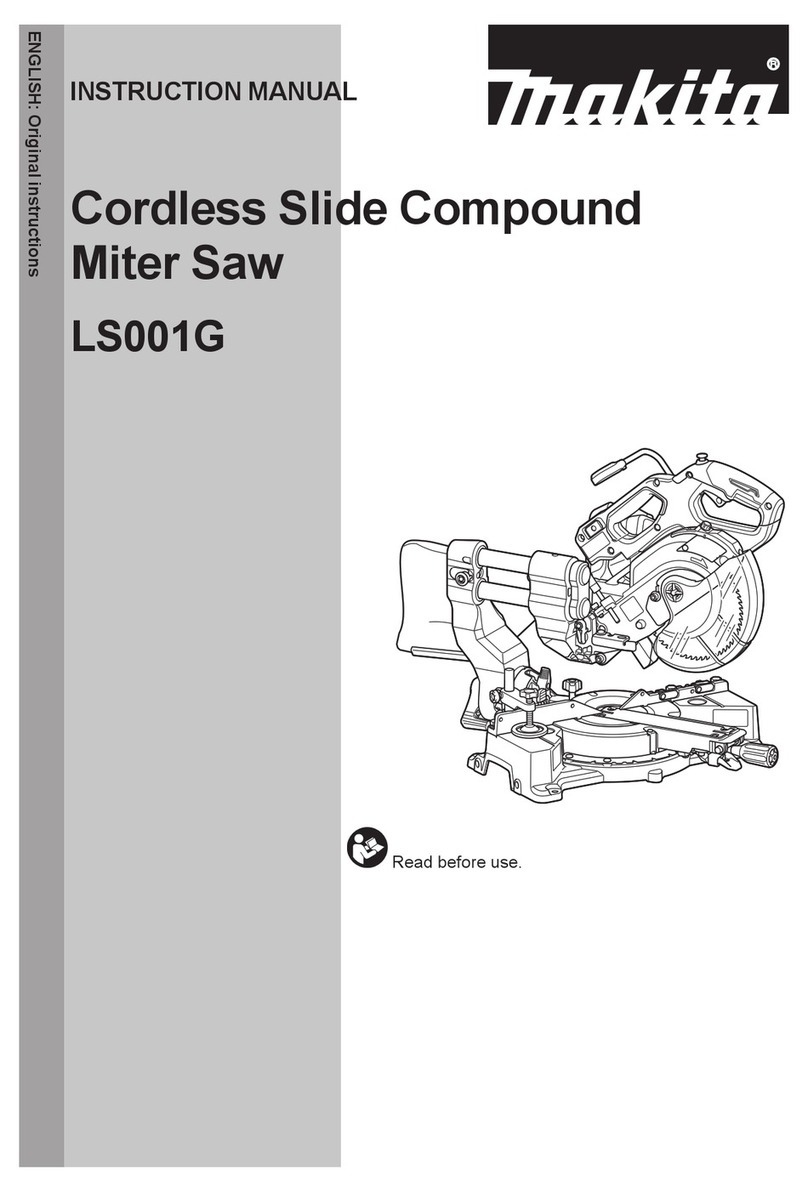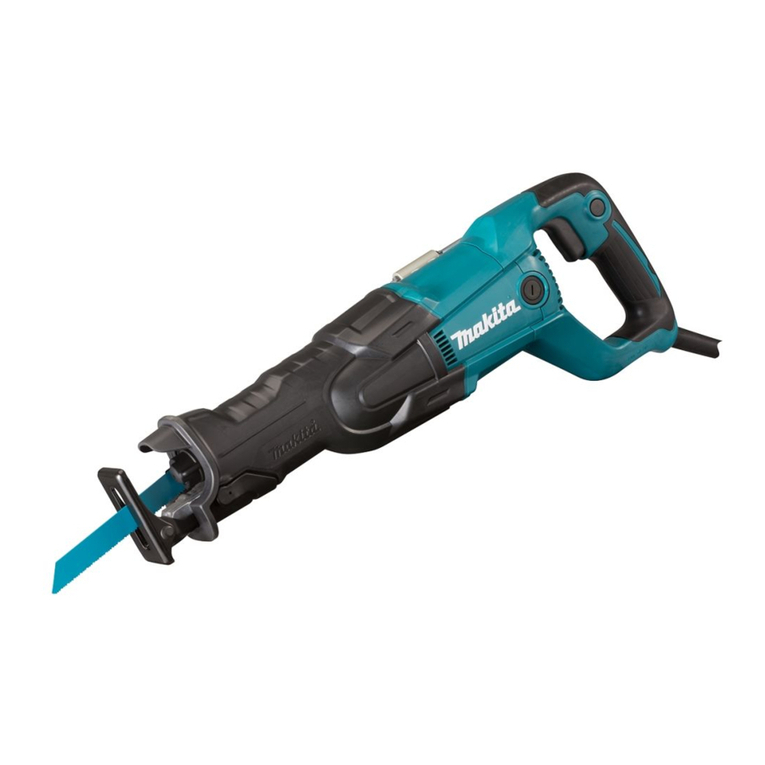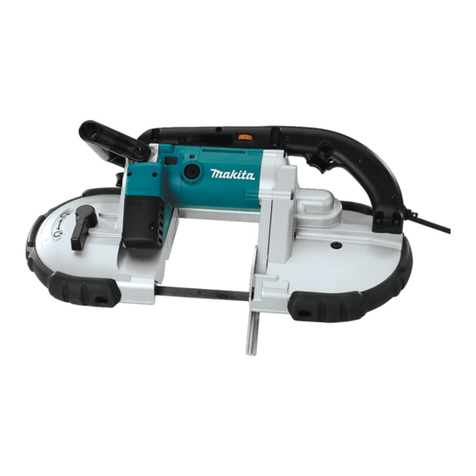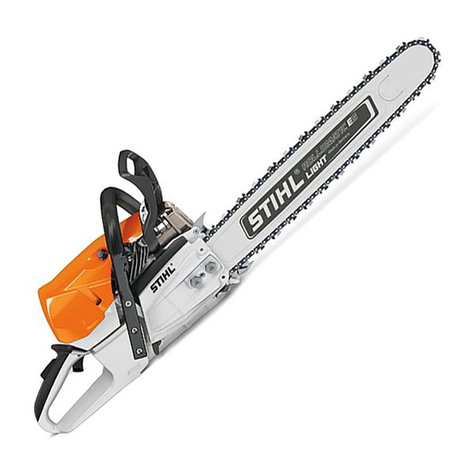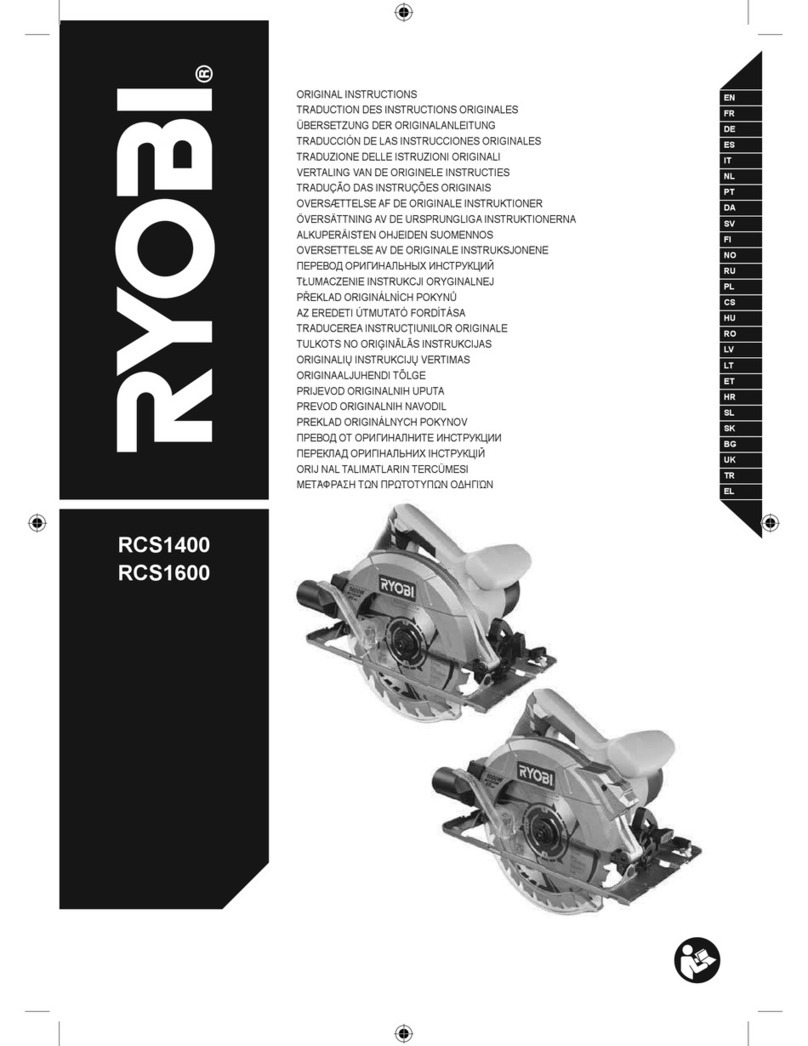
4
For Model 5903R
ENG005-2
For European countries only
Noise and Vibration
The typical A-weighted noise levels are
sound pressure level: 95 dB (A)
sound power level: 106 dB (A)
Uncertainty: 3 dB(A)
Wear ear protection.
The typical weighted root mean square acceleration
value is not more than 2.5 m/s2.
These values have been obtained according to
EN60745.
For Model 5103R/5143R
ENG005-2
For European countries only
Noise and Vibration
The typical A-weighted noise levels are
sound pressure level: 94 dB (A)
sound power level: 105 dB (A)
Uncertainty: 3 dB(A)
Wear ear protection.
The typical weighted root mean square acceleration
value is not more than 2.5 m/s2.
These values have been obtained according to
EN60745.
ENH101-5
EC-DECLARATION OF CONFORMITY
We declare under our sole responsibility that this
product is in compliance with the following standards of
standardized documents;
EN60745, EN55014, EN61000 in accordance with
Council Directives, 89/336/EEC, 98/37/EC.
Yasuhiko Kanzaki CE2005
000087
Director
MAKITA INTERNATIONAL EUROPE LTD.
Michigan Drive, Tongwell, Milton Keynes, Bucks MK15
8JD, ENGLAND
Responsible manufacturer:
Makita Corporation Anjo Aichi Japan
GEB029-1
SPECIFIC SAFETY RULES
DO NOT let comfort or familiarity with product
(gained from repeated use) replace strict adherence
to circular saw safety rules. If you use this tool
unsafely or incorrectly, you can suffer serious
personal injury.
Danger:
1. Keep hands away from cutting area and the
blade. Keep your second hand on auxiliary
handle, or motor housing. If both hands are
holding the saw, they cannot be cut by the blade.
2. Do not reach underneath the workpiece. The
guard cannot protect you from the blade below the
workpiece. Do not attempt to remove cut material
when blade is moving.
CAUTION: Blades coast after turn off. Wait until
blade stops before grasping cut material.
3. Adjust the cutting depth to the thickness of
the workpiece. Less than a full tooth of the blade
teeth should be visible below the workpiece.
4. Never hold piece being cut in your hands or
across your leg. Secure the workpiece to
stable platform. It is important to support the
work properly to minimize body exposure, blade
binding, or loss of control.
A typical illustration of proper hand support, workpiece
support, and supply cord routing (if applicable).
000157
5. Hold power tool by insulated gripping
surfaces when performing an operation where
the cutting tool may contact hidden wiring or
its own cord. Contact with a "live" wire will also
make exposed metal parts of the power tool "live"
and shock the operator.
6. When ripping always use a rip fence or
straight edge guide. This improves the accuracy
cut and reduces the chance of blade binding.
7. Always use blades with correct size and shape
(diamond versus round) of arbour holes.
Blades that do not match the mounting hardware
of the saw will run eccentrically, causing loss of
control.
8. Never use damaged or incorrect blade
washers or bolt. The blade washers and bolt
were specially designed for your saw, for optimum
performance and safety of operation.
9. Causes and Operator Prevention of Kickback:
−kickback is a sudden reaction to a pinched,
bound or misaligned saw blade, causing an
uncontrolled saw to lift up and out of the
workpiece toward the operator;
−when the blade is pinched or bound tightly by
the kerf closing down, the blade stalls and the
motor reaction drives the unit rapidly back
toward the operator;
−if the blade becomes twisted or misaligned in
the cut, the teeth at the back edge of the
blade can dig into the top surface of the wood
causing the blade to climb out of the kerf and

